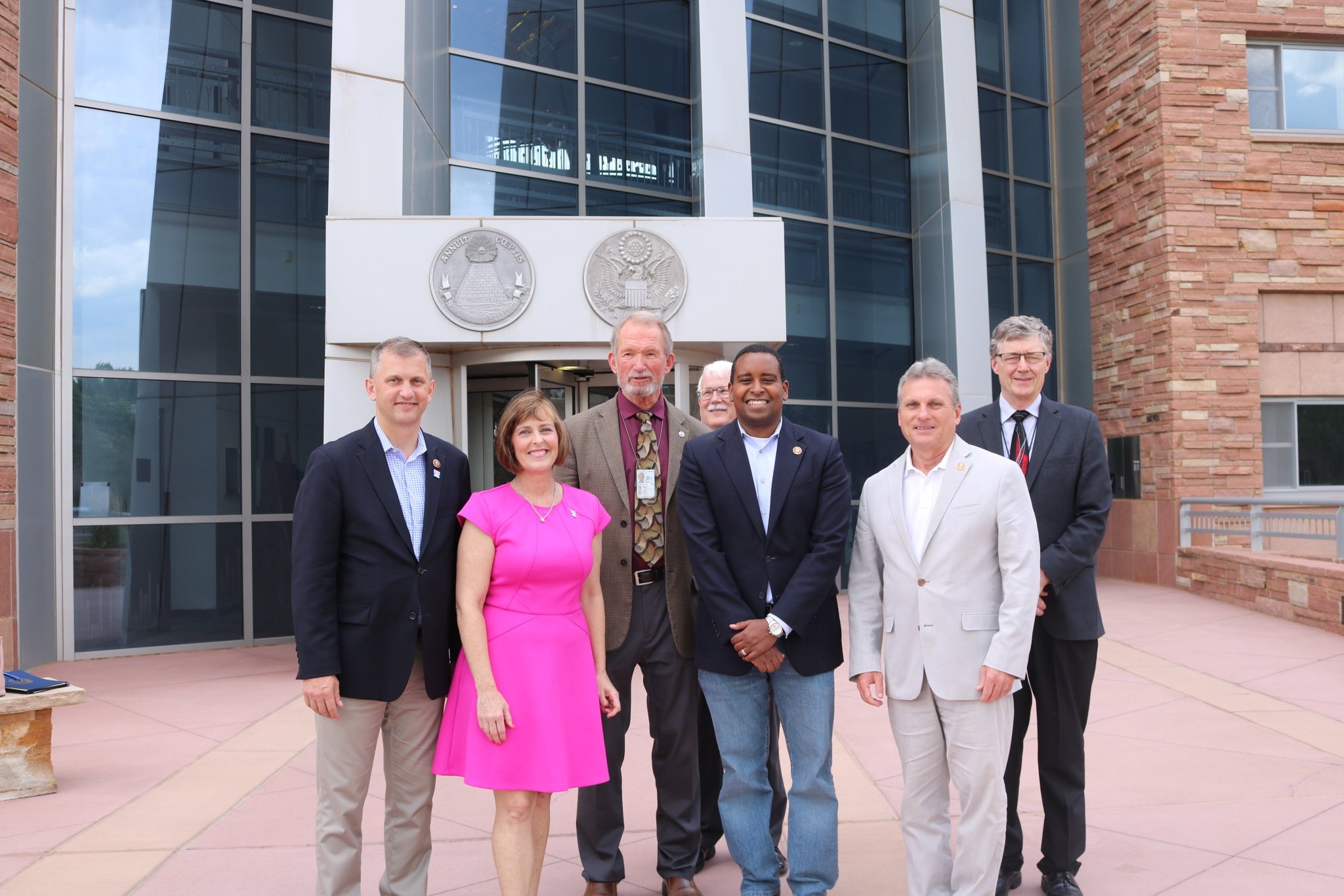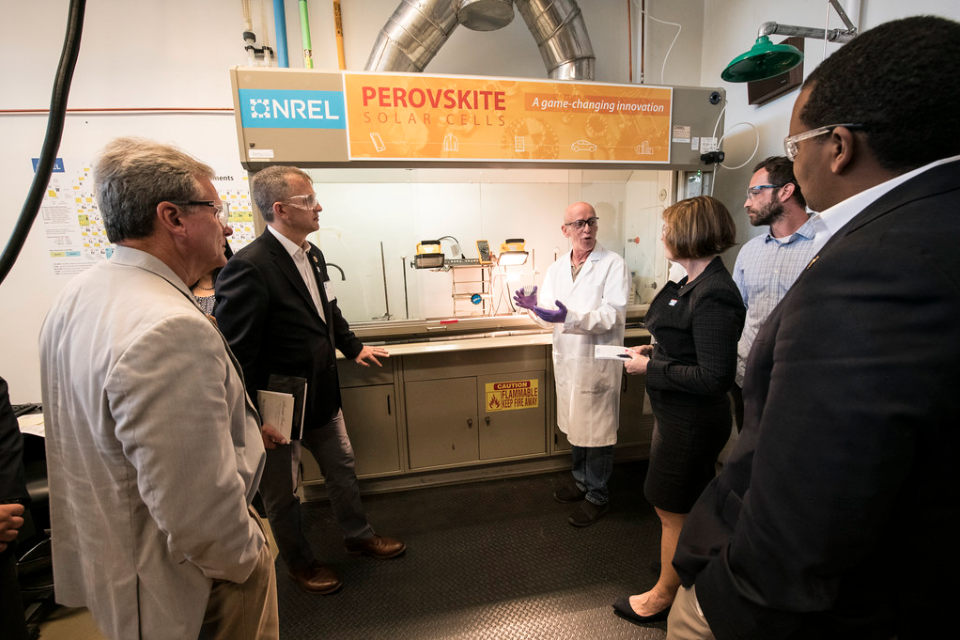|
|
| ICYMI: The 99% Get a Bigger Raise |
|
|
In case you missed it, the Wall Street Journal's editorial board wrote an article this week about how pro-growth and free market policies like tax reform are working for hardworking Americans. Click here to read more.
The 99% Get a Bigger Raise
The Wall Street Journal Editorial Board
Political discourse nowadays is enough to depress anyone, and the media don’t help by ignoring good economic news. But buck up, Americans: Worker wages are growing much faster than previously reported.
The Bureau of Economic Analysis (BEA) on Tuesday published its annual revisions to personal income data, and the surprise was the huge jump in disposable income and employee compensation.
The revisions show that employee compensation rose 4.5% in 2017 and 5% in 2018—some $4.4 billion and $87.1 billion more than previously reported. The trend has continued into 2019, with compensation increasing $378 billion or 3.4% in the first six months alone. Wages and salaries were revised upward to 5.3% from 3.6% in May year over year. And in June wages and salaries grew at an annual rate of 5.5%, which is a rocking 4.1% after adjusting for inflation.
This is far more than the 3.1% year over year increase in average hourly earnings that the Labor Department’s jobs report showed for June. One reason for the disparity may be that employers are hiring millions of younger, lower-income workers, which may be depressing average hourly earnings as older, more highly paid workers retire.
The BEA also revised overall personal income up by 1.7% for 2017 and 2018 and transfer receipts down 0.7%. In sum, Americans are earning more and relying less on government. Personal savings estimates were also increased by $217 billion for the last two years and are now $1.3 trillion, which means Americans are socking away more of their earnings.
The personal savings rate was revised upward to 8.1% from 6.1% in May, which is much higher than the roughly 5% before the last two recessions. This should make the current economic expansion more durable since consumption isn’t being pumped up largely by increased household debt. Instead consumer spending has increased as wage growth has accelerated amid a tight labor market.
Recall how liberals blamed “secular stagnation” as the reason worker incomes weren’t growing faster during the latter years of Barack Obama’s Presidency. Yet employee compensation has increased by $150 billion more in the first six months of 2019 than all of 2016. Compensation increased 42% more during the first two years of the Trump Presidency than in 2015 and 2016. This refutes the claim by liberals that the economy has merely continued on the same trajectory since 2017 as it was before.
The economy barely skirted recession in the final Obama years, and economic policy changed in 2017. Deregulation has unleashed repressed animal spirits, especially in energy. Tax reform has also spurred business investment in new facilities and equipment, which over time should translate into higher worker productivity and wages.
Those reforms are continuing to pay economic dividends despite the damage from Mr. Trump’s trade policies. While Democrats and even some conservatives complain that workers haven’t benefited from tax reform, the evidence suggests otherwise.
Corporate after-tax profits increased by about $220 billion between 2016 and 2018 while employee compensation swelled nearly $1 trillion. Corporate profits declined 2.9% in the first quarter of 2019 even as wages grew at an annual rate of 10.1%. This sure sounds like an economy that is benefiting the 99%.
|
| From our Nation's Capitol ccxxii |
|
|
Tuesday, July 30, 2019: Yesterday, I had the pleasure of once again meeting with Ron Elliott, owner of Game Changers, at his new location on Broughton Street in downtown Savannah. I met with Ron at his Richmond Hill location a couple of years ago to discuss the benefits his business had experienced as a result of the Tax Cuts and Jobs Act that we passed while Republicans still controlled both Chambers of Congress. At that time he was in the process of opening his second location and still attributes the savings from the Tax Cuts and Jobs Act as part of the reason he was able to expand his business.

Rep. Carter meets with Game Changers owner, Ron Elliott |
This morning I’m on my way to Boulder, CO, with other members of the Select Committee on Climate Change for a field hearing and to tour research facilities in the area. Our first stop is at the National Oceanic and Atmospheric Administration (NOAA) David Skaggs Research Center that was opened in 1999, and whose mission is to understand and predict changes in climate, weather, oceans and coasts. Our visit begins with an overview of the facility that includes over 100 individual laboratories as well as high performance computing. Within the facility is the Earth System Research Laboratory (ESRL) which was created in 2005 when six research organizations were consolidated.

Rep. Carter tours the NOAA with other members of the Select Committee on Climate Change |
Next, we tour the Physical Science Division to learn about their work on droughts and flooding and understanding climate and its impacts on water in the US. Our next tour is of the Global Monitoring Division flask lab where we see an 800,000 year record of C02 and how they gather those measurements followed by a tour of the Global Systems Division JET computer lab. JET is a supercomputer that can make 5 trillion math calculations per second in weather forecasting. Our final stop on this tour is the Chemical Sciences Division where we view the Light Detection and Ranging (Lidar) Lab. Lidar is a remote sensing method that is often collected by air and is used to examine the surface of the Earth to predict storm surge modeling, shoreline mapping and coastal vulnerability, among other things. Next, we head to the University of Colorado Boulder to visit the Cooperative Institute for Research in Environmental Sciences (CIRES) where their scientists conduct world-class Earth science research such as forecasting wildfire smoke and detecting emerging drought. After a presentation on sniffing out important greenhouse gases where CIRES measures and better understands methane and carbon dioxide in the atmosphere, we visit a lab doing research on microbes and their relevance to the health and function of ecosystems, plants and animals. Our last presentation deals with the work being done in the Earth lab particularly as it relates to wildfires.
Wednesday, July 31, 2019: Our first stop today is the National Renewable Energy Laboratory (NREL) in Golden, CO, where we begin with an overview of the facility that does research on renewable energy, primarily wind and solar. Afterwards, we tour the Energy Systems Integration Facility where we see the high performance computing and data visualization being used in wind power followed by a visit to a lab working on cyber security in the energy ecosystem. Next, we visit a lab working on grid modernization before visiting the hydrogen infrastructure testing and fuel cell research center. Our next stop is the science and technology facility tour where we visit the next generation solar materials research center and see the next generation photovoltaic research and development including the potential uses of perovskites. Perovskites are naturally occurring minerals that can be painted on solar cells to enhance their performance. Our last two presentations are an overview of the next generation bioenergy research and development and the benefits of renewable energy and energy efficiency.

Rep. Carter tours NREL with Rep. Castor, Rep. Neguse, and Rep. Casten |
Next, we head to the Flatirons campus for a tour of the Composites Manufacturing Education and Technology facility (COMET), NREL’s research campus that focuses primarily on wind energy. On display at this structural research facility are enormous wind power blades that are tested for durability and function. Afterwards, we head to the National Center for Atmospheric Research (NCAR) in Boulder where we tour the Mesa Lab Visitors Center that is open to the public and offers state-of-the-art exhibits dealing with weather. After our tour, we have a roundtable discussion on NCAR’s role in developing the National Water Model and how technology is transforming knowledge and prediction of water risks such as flooding and droughts.
Thursday, August 1, 2019: After a late flight last night, I wake up in Coeur d’Alene, ID, where I am the keynote speaker today at the Association of Energy Services Companies (AESC) annual meeting. AESC is an international association comprised of companies and individuals providing essential services and products to the upstream oil and gas industry and I am happy to share with them the work being done in Washington particularly on the Energy and Commerce Committee that I serve on. Afterwards, I head to Washington State University (WSU) in Spokane, WA, to visit their health sciences campus and learn of the fine work they are doing here in training health care professionals of the future. My visit starts with an overview of WSU and the work being done at their four campuses around the state followed by a presentation of the work being done on the Spokane campus, particularly in research. Afterwards, I tour the impressive schools at the WSU Spokane campus including the nursing school, pharmacy school and finally the Spokane Teaching Health Center, a clinical site for Spokane medical residency programs where the residents treat patients under the supervision of practicing physicians. Afterwards, I head to the Spokane airport where I take a red-eye flight home.
Friday, August 2, 2019: After leaving Spokane at 11:30 p.m. PST last night, I arrive in Savannah this morning at 9:15 a.m. EST. While there’s no rest for the weary, I head down to Naval Submarine Base Kings Bay in Camden County to meet with the new leadership team and review all the good things that are happening here.

Rep. Carter visits Naval Submarine Base Kings Bay in Camden County |
Meeting with Rear Admiral Mike Bernacchi, Capt. Jeff Lamphear, Capt. Chester Parks, Capt. Craig Gummer and Capt. Paul Dinius, we review the proposed schedule for the arrival of the Columbia class submarines to replace the Ohio submarines that I’ve been working to secure in Congress as well as the $500 million renovation project planned for the dry dock. We also review the Warrior Toughness programs that they are installing to help sailors’ better cope with stress and build mental toughness. Exciting things are happenings at Kings Bay and with the outstanding leadership of these fine leaders I know we are in good hands. Afterwards, I head to the Summer Wrap Up of the Camden County Teen Republicans where I have the opportunity to speak to a great and enthusiastic group of young people. I also have the opportunity to recognize Ellis Davis who has recently been elected Chairman of the Georgia Teen Republicans and Desmond Fogle who has been elected South Vice Chairman of the Georgia Teen Republicans. It’s great young people like these that give me faith that our greatest times in this wonderful country still lie ahead of us.

Rep. Carter Speaks to the Georgia Teen Republicans |
Next, I meet with Dave Reilly who serves as a National Judge Advocate for the Navy League as well as a member of the City Council in St. Marys. Dave does a great job of presenting me a review of the great work being done by our Coast Guard and the important role they play. Afterwards, I head to Camden County High School where the Wildcat football team is having their first scrimmage of the year and join a great crowd of fans in watching what will be one of the best teams in the state this year.
|
|
|

